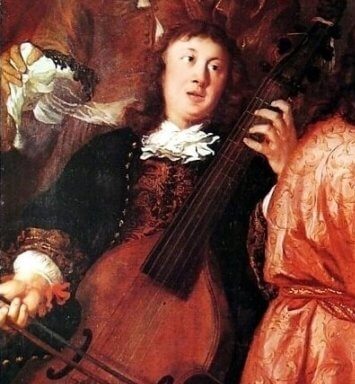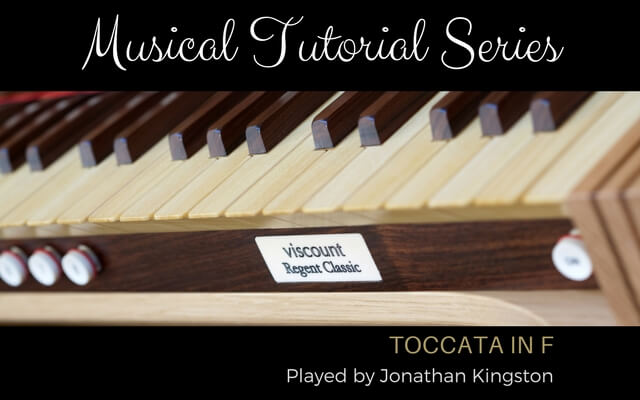Regent Classic’s musical tutorial videos for 2017 feature pieces from the ABRSM organ examination syllabus. Organist Jonathan Kingston gives you a short introduction to each piece, offering some background and tips about performance and registration.
See the Organ Music Tutorial Series overview for links to more organ videos and information about them. There you will also be able to read more about Jonathan Kingston and the organs being played in this series.
Toccata and Fugue in F by Dietrich Buxtehude
Buxtehude’s Toccata (and Fugue) in F is on the ABRSM Grade 8 syllabus. It’s a fine example of runs and scalic passages strongly tethered to tonic and dominant progressions, explains Jonathan before this month’s tutorial performance.

Almost certainly born in Helsingborg (just across the water from Copenhagen, and now in Sweden) in 1637, Dietrich Buxtehude took up the post of organist at the Marienkirche of Lübeck in Germany in 1668. (What is apparently the only surviving picture of him, playing a viol, is shown here.) Many of his organ works exemplify the so-called stylus fantasticus or fantasy style, a way of composing baroque instrumental music that often allows displays of virtuosic technique and improvisatory flourishes, often in relatively short episodes that include fugal writing. In Buxtehude’s organ music we often find this structure in his Praeludia and Toccatas.

There were two organs at the Marienkirche at Buxtehude’s time—the Totentanz or Danse Macabre organ (so-called because of a painting that hung near it) in a transept, and the larger main organ at the west end (shown in the picture from 1913), both of which were unfortunately destroyed in the war during the bombing of Lübeck by the RAF in 1942. (The other picture below, taken in 1942, shows the ruins of the merchant’s quarter and the church.) The main organ was a big beast, with a substantial specification of 52 stops that almost certainly included a 32 foot principal rank and some big pedal reeds. This implies a certain licence for organists not to hold back on their registrations with Buxtehude’s big organ works, when it seems appropriate.

Jonathan Kingston plays Toccata and Fugue in F
The Toccata in F provides an opportunity for some detailed pedal semiquaver work, which can be brought out in the texture by the addition of a small 16’ reed stop that speaks quickly. Manual choruses built to mixtures without 16’ tone work well here, says Jonathan.
In the buoyant and happy fugue, he suggests that a lighter tone is desirable, but that one might like to add stops at suitable junctures in order to build towards a grand conclusion, as you’ll hear in this performance. Clarity is so important here—it’s really important to allow the music to dance! You’ll notice that Jonathan uses a delicate eight-foot reed stop during the early pedal parts of the fugue to delightful effect.
If you would like to watch the video tutorial right now – here it is:
I have had a passion for church organs since the tender age of 12. I own and run Regent Classic Organs with a close attention to the detail that musicians appreciate; and a clear understanding of the benefits of digital technology and keeping to the traditional and emotional elements of organ playing.



